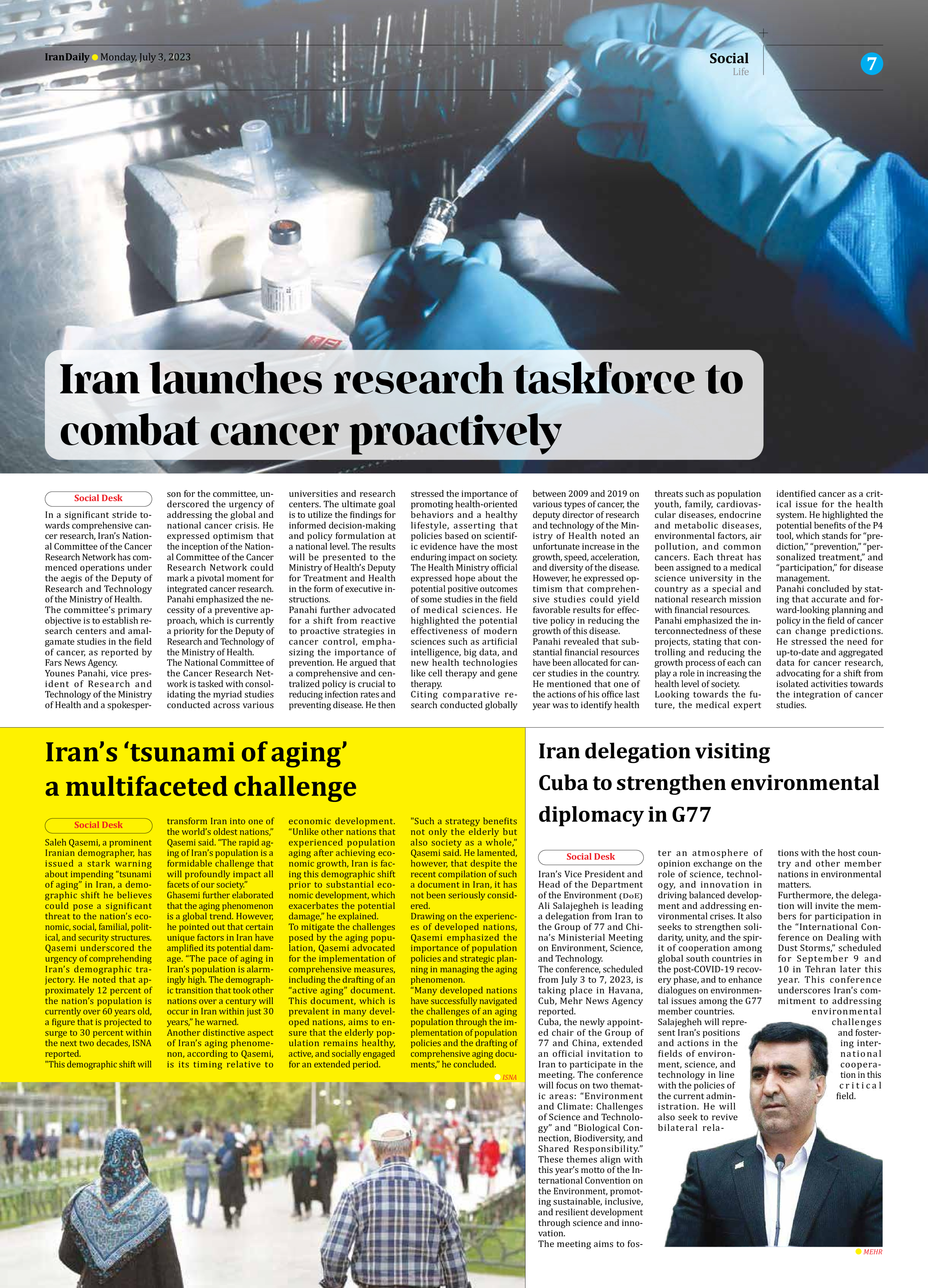
Iran’s ‘tsunami of aging’ a multifaceted challenge
Saleh Qasemi, a prominent Iranian demographer, has issued a stark warning about impending “tsunami of aging” in Iran, a demographic shift he believes could pose a significant threat to the nation’s economic, social, familial, political, and security structures.
Qasemi underscored the urgency of comprehending Iran’s demographic trajectory. He noted that approximately 12 percent of the nation’s population is currently over 60 years old, a figure that is projected to surge to 30 percent within the next two decades, ISNA reported.
"This demographic shift will transform Iran into one of the world’s oldest nations,” Qasemi said. “The rapid aging of Iran’s population is a formidable challenge that will profoundly impact all facets of our society.”
Ghasemi further elaborated that the aging phenomenon is a global trend. However, he pointed out that certain unique factors in Iran have amplified its potential damage. “The pace of aging in Iran’s population is alarmingly high. The demographic transition that took other nations over a century will occur in Iran within just 30 years,” he warned.
Another distinctive aspect of Iran’s aging phenomenon, according to Qasemi, is its timing relative to economic development. “Unlike other nations that experienced population aging after achieving economic growth, Iran is facing this demographic shift prior to substantial economic development, which exacerbates the potential damage,” he explained.
To mitigate the challenges posed by the aging population, Qasemi advocated for the implementation of comprehensive measures, including the drafting of an “active aging” document. This document, which is prevalent in many developed nations, aims to ensure that the elderly population remains healthy, active, and socially engaged for an extended period.
"Such a strategy benefits not only the elderly but also society as a whole,” Qasemi said. He lamented, however, that despite the recent compilation of such a document in Iran, it has not been seriously considered.
Drawing on the experiences of developed nations, Qasemi emphasized the importance of population policies and strategic planning in managing the aging phenomenon.
“Many developed nations have successfully navigated the challenges of an aging population through the implementation of population policies and the drafting of comprehensive aging documents,” he concluded.







